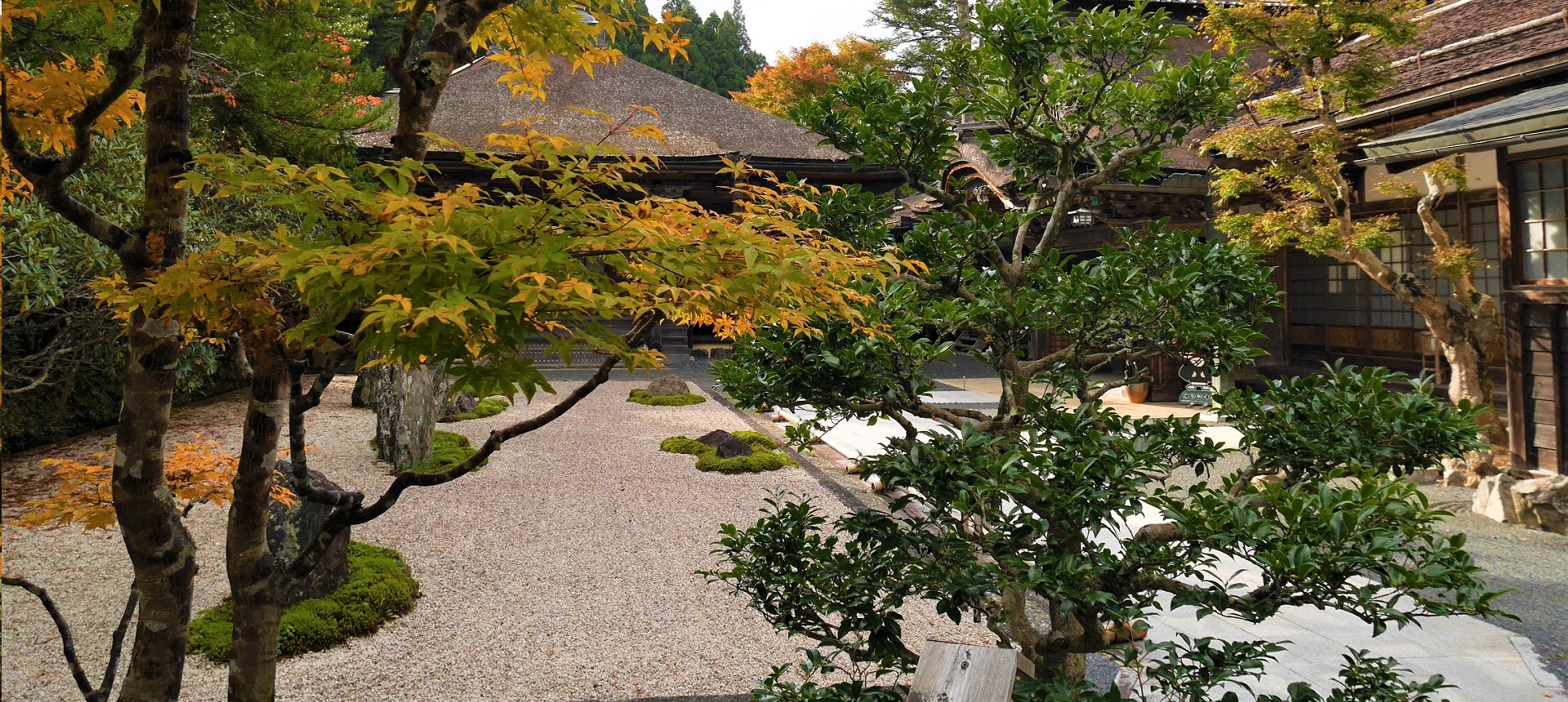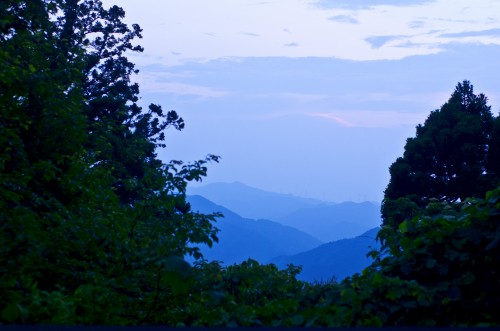
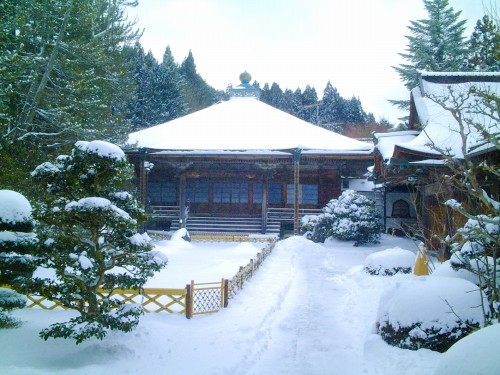
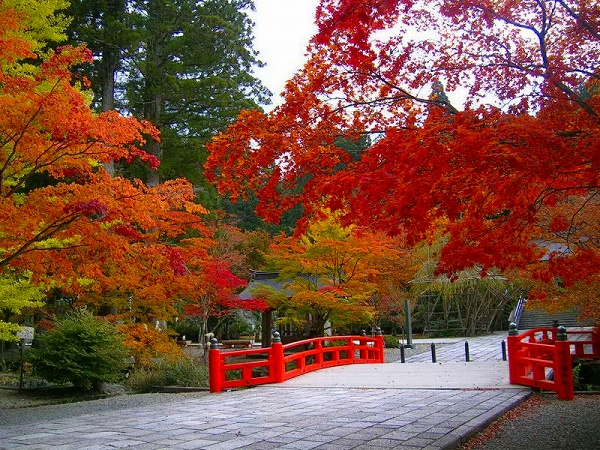
Sacred Kōyasan, created by Kōbō Daishi Kūkai
At 800 meters above sea level, Kōyasan is located in the heart of the northern mountain district of Kii Peninsula. Kōbō Daishi Kukai, who went to China and brought Shingon Esoteric Buddhism (which originated in India and reached China via the famed Silk Road) to Japan, developed this mountain area as a sanctuary for cultivation and discipline. He established monasteries in Kōyasan about 1200 years ago. Kōyasan (Mt. Kōya) is the fruit of the deep faith of one individual. Its long history and dedication to the eternal peace and welfare of mankind has been successfully maintained by the faithful followers of Kōbō Daishi.
KCCN The Koyasan Cross-cultural Communication Network
KCCN is a non-profit organization dedicated to providing accurate and useful information for all visitors wanting to learn more about Koyasan.
Welcome to YŌCHI-IN!
For a long time, many subsidiary temples of Kongōbuji temple (headquarters of the Kōyasan branch of Shingon Buddhism) have been playing a role based on faith in and study of Esoteric Buddhism (also known as Mikkyō or Vajrayāna). In order to achieve this, in the Edo period they started offering accommodation for visitors to the mountain. Today, 52 out of 117 subsidiary temples in Kōyasan offer lodgings. The number of registered visitors exceeds one million annually. YŌCHI-IN is one of the main temples in Kōyasan.
YŌCHI-IN was established in 1127 by Imperial Prince Kakuhō, the fourth son of Emperor Go-Shirakawa. Originally the temple’s name was written with different Chinese characters than the ones used currently, but was pronounced the same way: 養智院, literally meaning “temple where wisdom is cultivated.” In 1258, Emperor Go-Saga visited YŌCHI-IN and was very impressed by beautiful cherry blossoms reflecting on the garden pond. He ordered Imperial Prince Kujo to compose a poem, which described his deep impressions upon seeing the beauty of cherry blossoms reflected on the clear water of the pond. After that, the characters making up the name of the temple were changed to櫻池院, literally meaning “cherry blossom pond temple”. From the distant past to the present day, YŌCHI-IN has been one of the best gakuryō (scholar-monk) temples on Kōyasan, producing many excellent scholars of Esoteric Buddhism.
At YŌCHI-IN you can eat traditional Buddhist vegetarian food, sleep in futon beds and attend the morning ceremony (at about 6:30). Bath and toilets are communal style. Check in time is from 15:00 to 17:00.
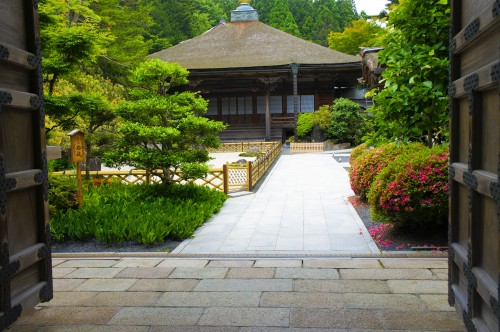
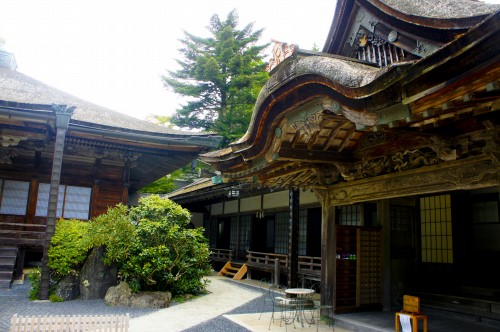
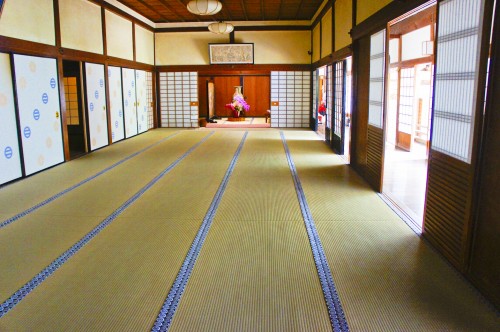
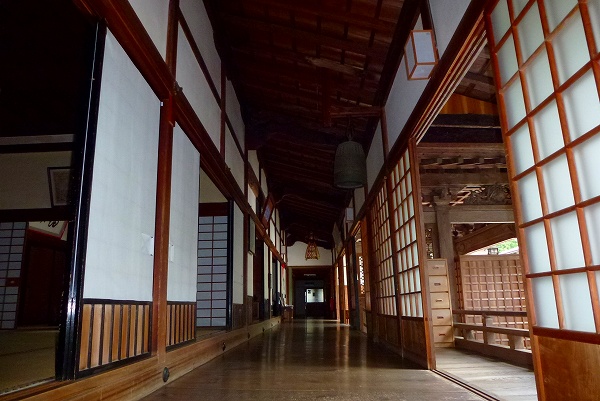
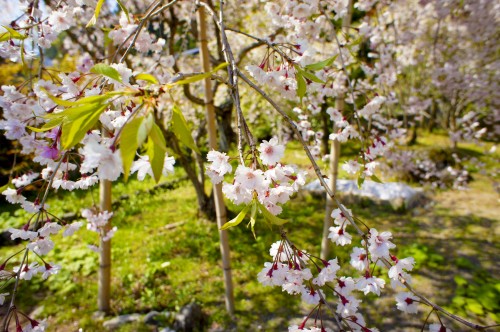
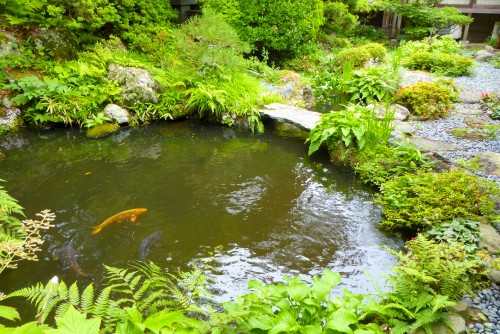
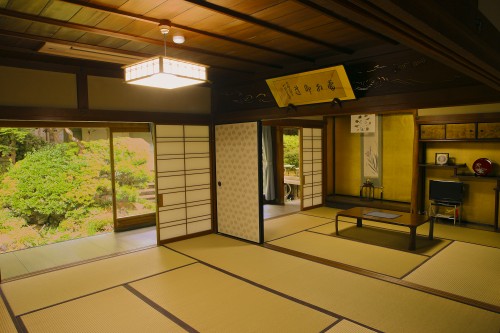
Lodging
On Kōyasan there are around sixty historical temples where visitors are accommodated in the traditional manner. These temples are called “shukubō” and welcome you with full hospitality. Shukubō temples deserve a beautiful Japanese garden, traditional lodging rooms with shoji-style dividers, tatami, fusuma doors, and a backyard garden with a small pond and bonsai trees. Of interest for guests are futon beds, classical baths, and zabuton cushions. Staying at a shukubō temple for one night, you can experience many aspects of the older Japanese way of life.
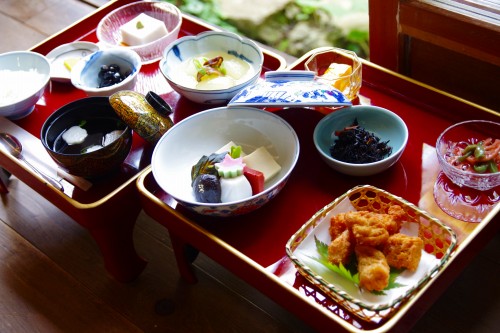
Food
There is a traditional vegetarian style of cooking called shōjin ryōri in Japanese. It is skillfully cooked without using any meat, fish, onions, garlic and so on. Some common dishes are tempura, fried foods, Kōya-dōfu (a dry kind of tofu invented on the mountain), goma-dōfu, miso soup, sweet-sour seaweed in vinegar. The most delicious is goma-dōfu, which is cooked with sesame seeds and starch. The taste is extremely good. The old method of cooking this has been secretly transmitted from monk to monk, chef to chef, for eleven hundred years.

Slippers
When entering the temple, you are asked to remove your shoes and change into slippers. Slippers may be worn throughout the whole temple, but please remove them when entering your room. When using the toilet, please leave your slippers outside and change into the toilet slippers which are inside the restroom.
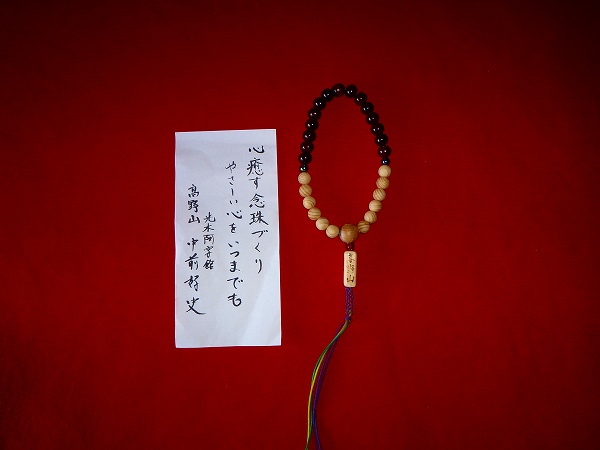
Souvenir
The most interesting small gifts and charms for your family are: omi-e (Kōbō Daishi’s portrait), juzu/nenju (beads or rosary), Kōbō Daishi pendants, omamori (amulet) for driving safety, Buddha paintings, Kōya-dōfu and many others. These are sold at many Buddhist supply and souvenir shops in town.
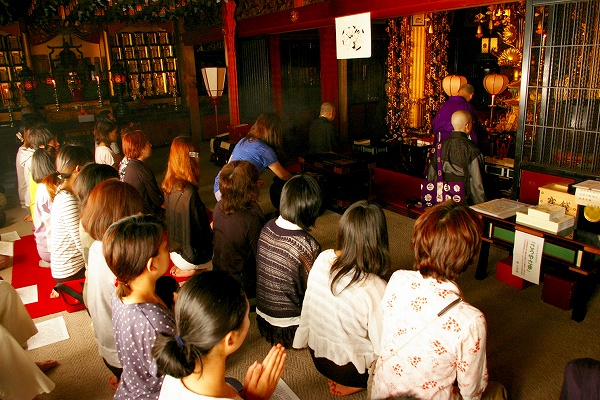
Service
The morning service is conducted at 6:30 (AM). You may enter the hondō (main temple hall) a few minutes earlier. The hondō is a sacred place, so please enter in proper attire. No yukata may be worn inside the hondō. Slippers are removed before entering the hondō. After the morning service, breakfast will be ready at 7:30.
Please pay your bill at the temple office before you leave. If you have received a coupon from your travel agency, please hand it over to the staff your arrival.
If you have any questions, please feel free to ask at the office any time.
We wish you a pleasant stay at YŌCHI-IN.
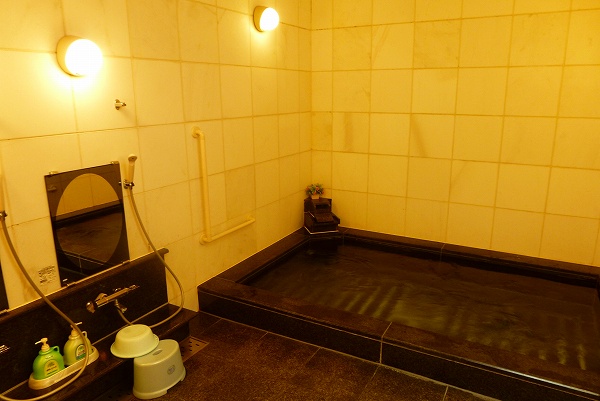
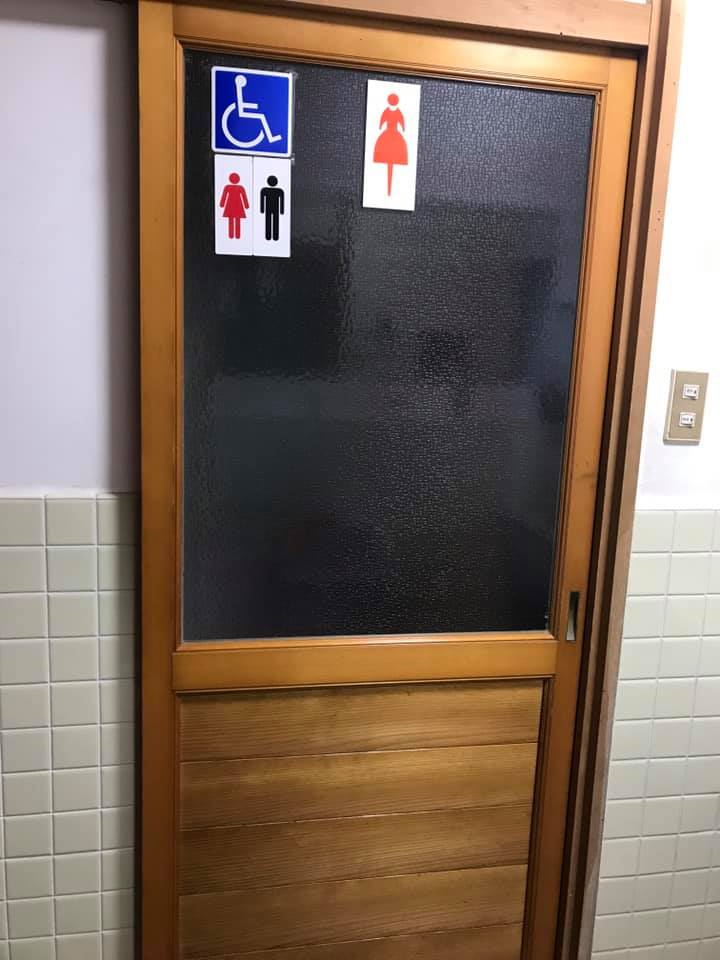
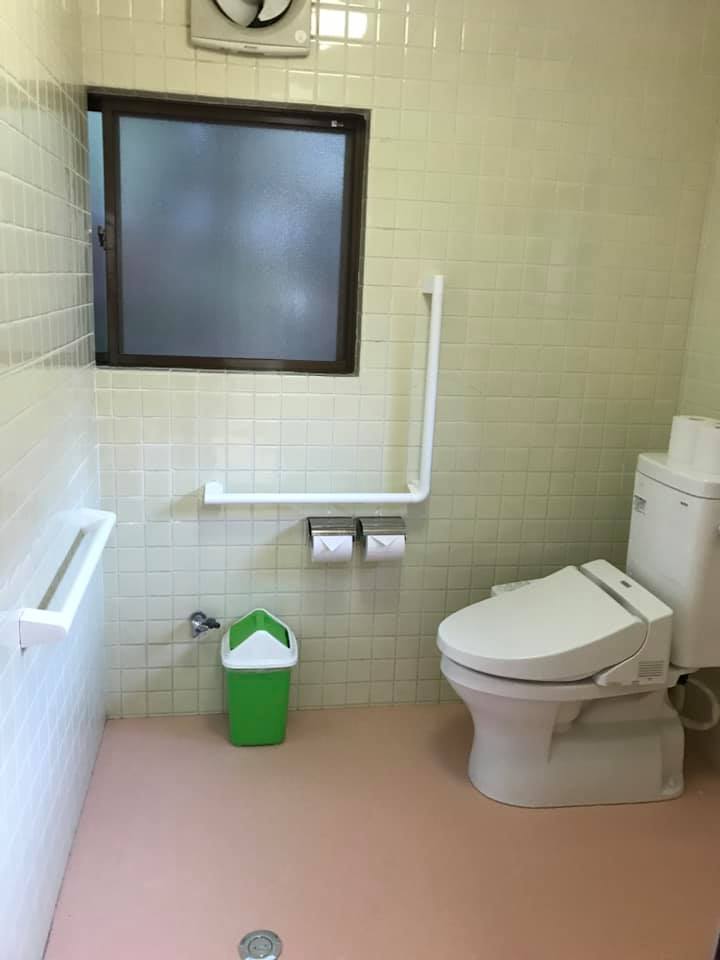
Bathroom
The bathrooms are open from 16:30. to 21:00. After entering the bath room, please remove your slippers. Once inside, you will find baskets in the anteroom. Please put your clothes in there. The bath itself is entered completely naked; only a small towel may be taken inside. Please wash yourself before entering the bathtub. In Japan, the bath is a place of communication as well as relaxation, so please take your time.
How to spend your time at the temple
checking in
1

Entrance
2

Press the buzzer
3

Buzzer
4

Meet a monk
5

6

Take off your shoes
7

You are taken to your room.
8

Do not drag your luggage on the corridor and in the room.
guest room ~ shered bathroom
9

Take off your slippers before entering your room.
10

Slippers are not allowed on TATAMI.
11

Do not drag luggage.
12

Do not sit on the TOKONOMA.
13

Do not hang your wet towels on the prop beam.
14

Welcome tea service
15

Western toilet available
16

Japanese style toilet
17

You can walk around YOCHIIN in your YUKATA except Buddist ceremony or practices.
18

Take off slippers in front of the dressing room before the bathroom.
19

No YUKATA, underwears or bathing suits are allowed in the bathroom.
20

Wash yourself and rinse yourself before you soak yourself in the bathtub.
meal ~ bedding~ checking out
21

Japanese bath is communal to relax, so do not wash or soak towel in the bathtub.
22

Japanese bath is communal to relax, so do not wash or soak towel in the bathtub.
Unplug the bath water.
23

Meal shoud be taken at the designated room. Enjoy SHOJIN-RYORI, the temple vegetarian cuisine.
You can order beer or sake.
24

Tracin Sutra/Tracing Buddha's portrait can be exprienced after dinner.(1000 yen per person)
25

Your bedding is ready in your room.
26

Morning ceremony starts from 6:30, anybody can join the ceremony.
27

Please come to the office to check out. Credit cards (VISA, Master Card) are accepted.
28

Thank you for staying at our temple. We can keep your luggage after check out.
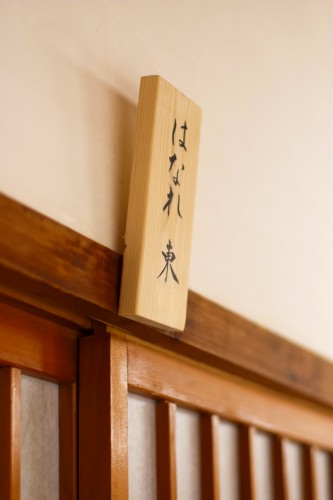
YŌCHI-IN is a Buddhist temple and guests are not served by professional hotel staff but training monks or apprentices who try to show their hospitality as part of Buddhist practice.
You may have some inconvenience during your stay at a Buddhist temple, but please understand that you are always welcome and appreciated in our temple.
Enjoy viewing our garden, a state-recognized Place of Scenic Beauty, and stroll around Kōyasan.
Rooms: non-Smoking rooms only. (There is designated area where you can smoke. Please ask our staff.)
*Wheelchair is available along the hallways but not in the room. We can prepare the chair only for disabled guests.
Check-in: 15:00-17:00
Check-out: 10:00
** We can look after your luggage before your check-in time or after check-out time.
Parking: Ffree parking is available for our guests.
Facility: communal bath inside (shared bath separated by sex), communal toilets, water cooler.
*** The communal bath is open from 15:00-21:00. No morning bath or shower is available.
**** Body soap, shampoo, conditioner and a hair dryer are provided in the bathroom.
***** Toilet paper and paper towel are available in the toilet.
****** Free wi-fi is available.
Room supplies: floor table, TV, safe, air conditioner, yukata set (Japanese style room wear), small towel, bath towel, toothbrush, tea set (free, upon request)
******* Children under 3 years can stay free without extra bedding.
******** No Western beddings. Guests sleep on futons on Tatami-mat rooms.
Payment: We accept credit cards.
Cancellation Policy: free cancellation up to 1 day before your check-in date.
Others: if you have food allergies, please let us know.
Your credit card number will be used for guarantee purposes only.
Access to Koyasan
-By Rail
•From Kansai International Airport Take the Nankai Line from Kansai International Airport to Namba Station then change Nankai Koya Line to go to Gokurakubashi Station. Then change again to the Nankai Cable Line for Koyasan Station. The journey takes about one and half hours.
•From Wakayama City Trains depart from Wakayama Station(JR Wakayama Line) to Hashimoto Station of Nankai Koya Line, change to Nankai Line to go to Gokurakubashi Station, then change the train again to the Nankai Cable Line to go to Koyasan Station. Total time taken is estimated at two hours.
When you get to Koyasan station, please take the bus to Daimon and get off the Kondo-mae stop. It takes for 15 minutes and costs 340 yen. If you take the bus to Okunoin , please get off the Senjyuin-bashi stop and walk to Yochiin for 10 minutes.
-By Car or Taxi
•From Osaka City Take Route 310 then Route 371 to get to Hashimoto City. From there to Koyasan take Route 24 to Route 480 (Koyasan Road). It will take about two and half hours.

